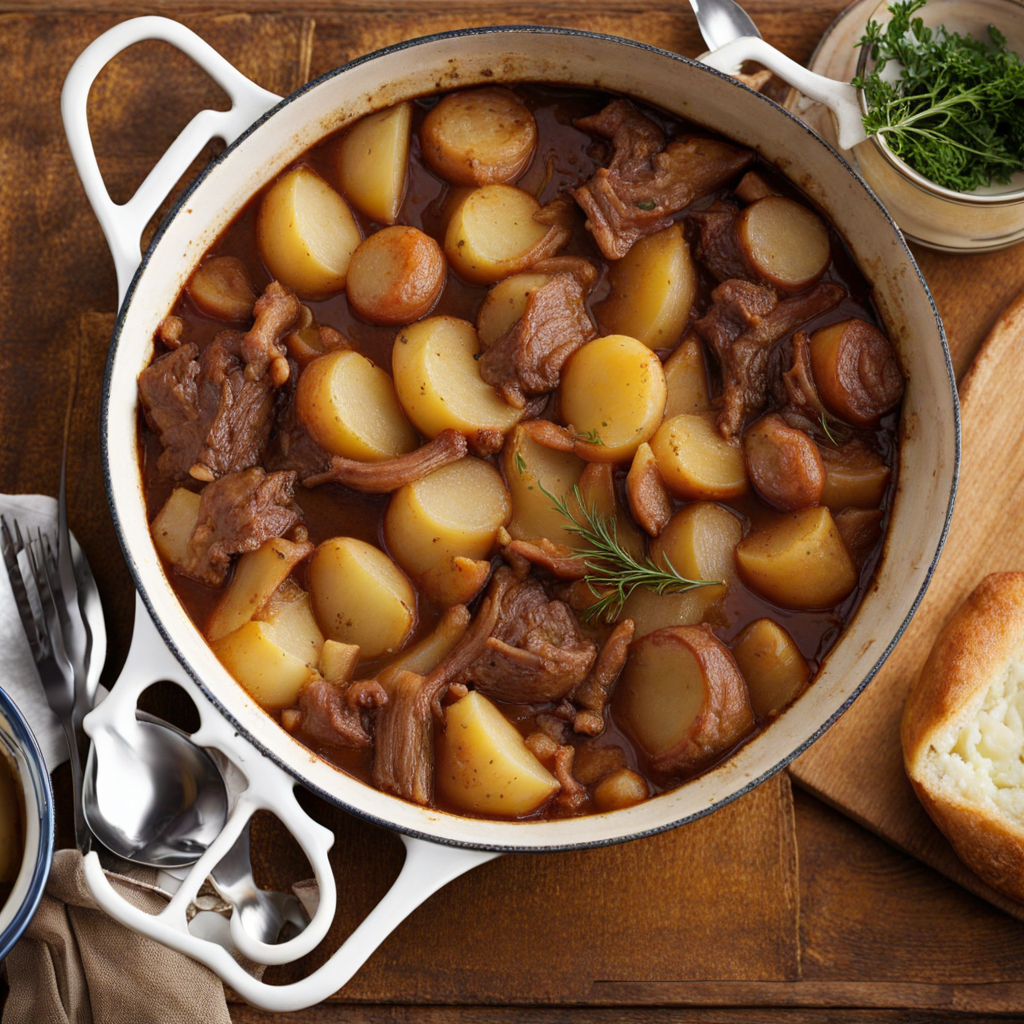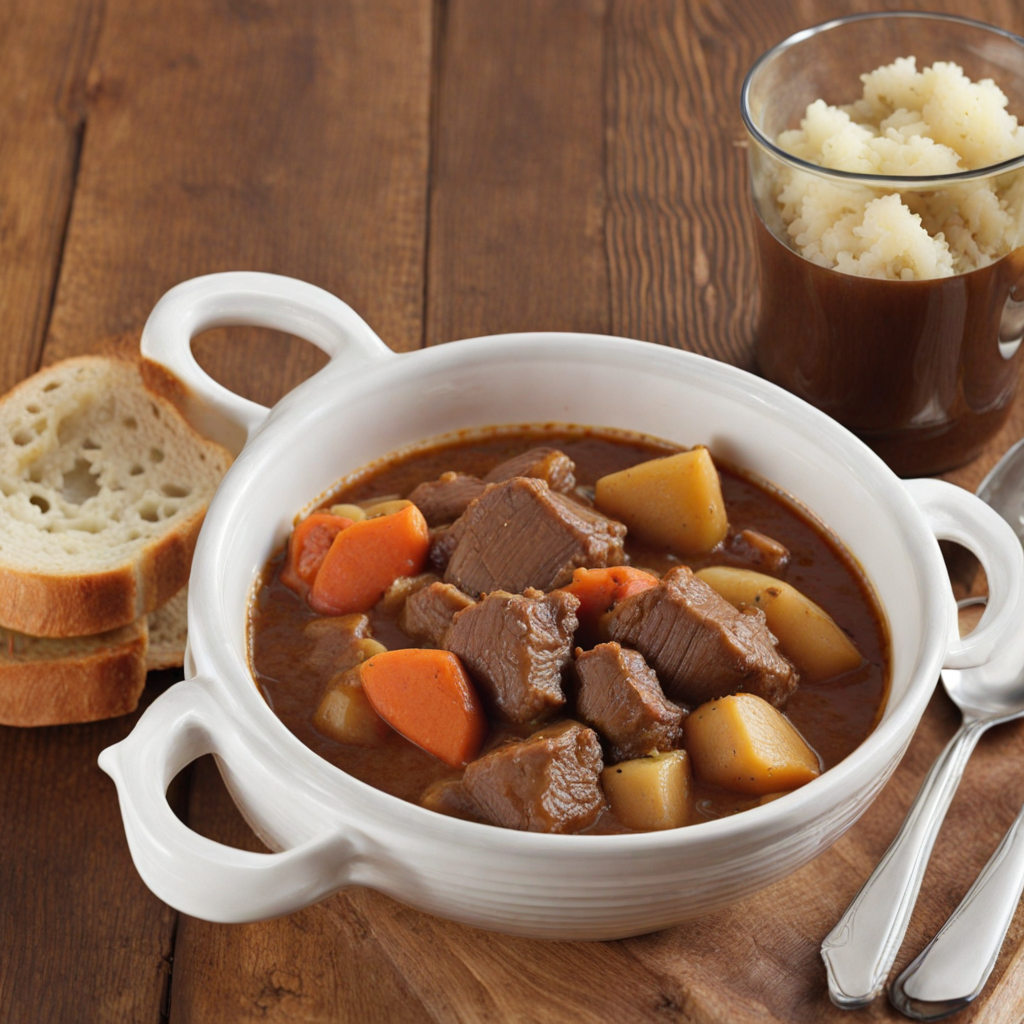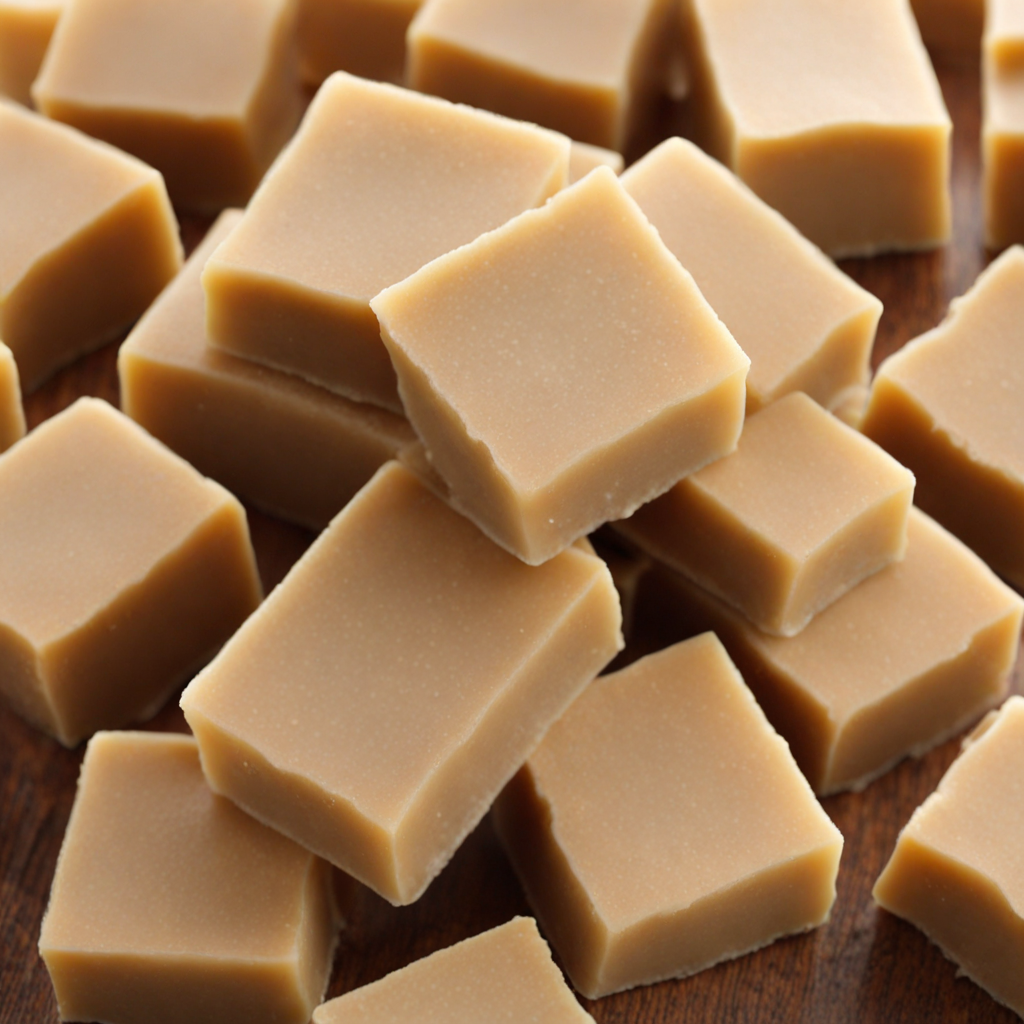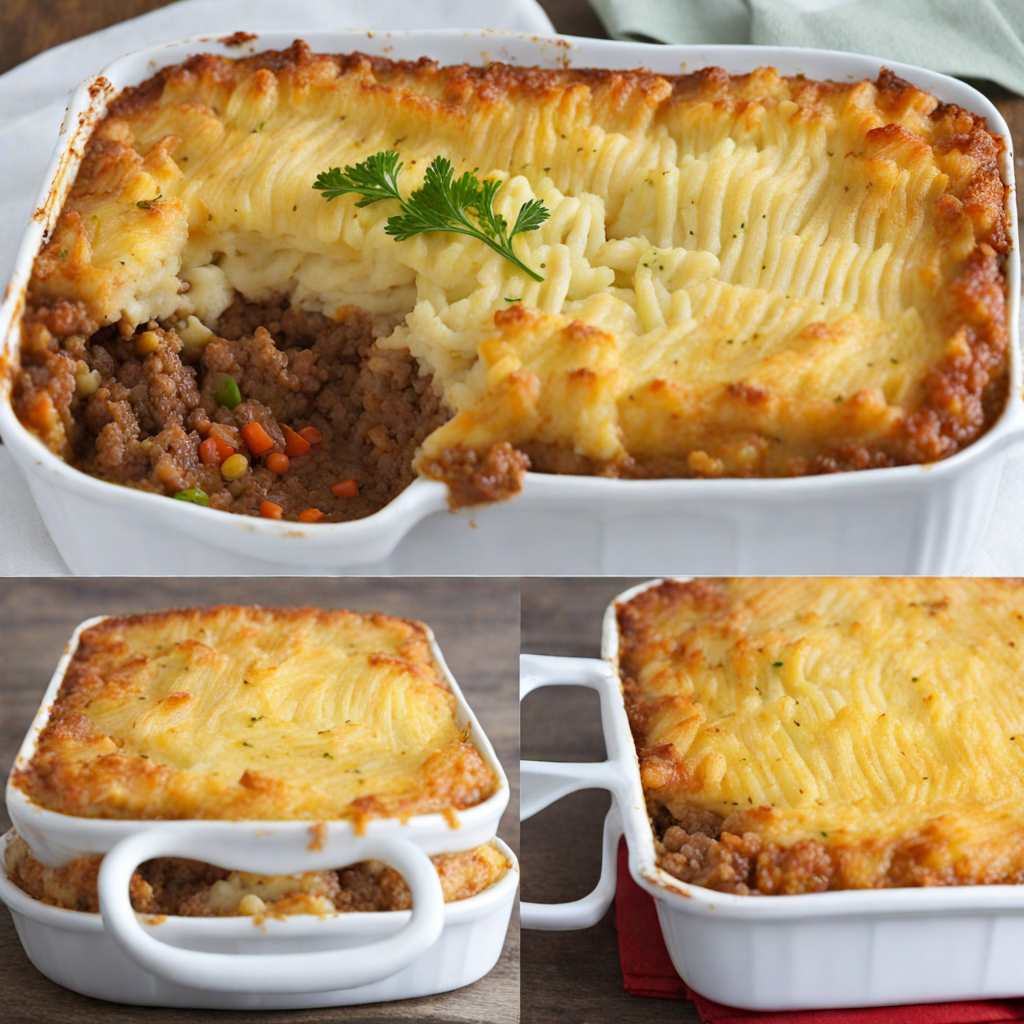Lancashire Hotpot
Lancashire Hotpot is a traditional dish hailing from the heart of the United Kingdom, specifically the region of Lancashire. This comforting one-pot meal is characterized by its rich and hearty flavors, making it a favorite during the colder months. At its core, the hotpot consists of tender lamb or mutton, which is slow-cooked to perfection alongside an assortment of vegetables such as onions, carrots, and sometimes turnips. The meat is typically seasoned with herbs like thyme and bay leaves, infusing the dish with a delightful aroma as it simmers away, allowing the flavors to meld beautifully. What sets Lancashire Hotpot apart is the unique topping of sliced potatoes, layered meticulously to create a crispy, golden crust. As the hotpot cooks, the potatoes absorb the savory juices from the meat and vegetables, creating a delectable combination of textures—a soft, melt-in-your-mouth filling contrasted with the crunchiness of the baked potato topping. This duality makes each bite a wonderful experience, showcasing the simplicity and depth of flavors that can be achieved with just a few quality ingredients. Traditionally, Lancashire Hotpot is served with pickled red cabbage or a side of crusty bread, which perfectly complements the dish and adds a tangy contrast to the rich flavors. The hotpot embodies the essence of British comfort food, bringing warmth and satisfaction to the table. Whether enjoyed on a chilly evening or shared during a family gathering, Lancashire Hotpot invites you to savor a taste of history, tradition, and the wholesome goodness of home-cooked meals.
How It Became This Dish
The History of Lancashire Hotpot: A Culinary Tradition of the North #### Origins of Lancashire Hotpot Lancashire Hotpot, a hearty dish synonymous with the northern English county of Lancashire, has its roots deeply embedded in the region's agrarian past. The dish is essentially a slow-cooked stew, traditionally made with lamb or mutton, potatoes, onions, and sometimes carrots, all layered beneath a blanket of sliced potatoes. Its origins can be traced back to the 18th and early 19th centuries, a time when the working class needed sustenance that was both filling and affordable. The hotpot is believed to have been influenced by the cooking methods of the region’s farming communities, which relied on the availability of local ingredients. The practice of slow-cooking meat and vegetables in a pot dates back centuries and can be seen across various cultures, but the distinct layering of potatoes is where Lancashire Hotpot sets itself apart. The layering technique not only served a practical purpose, allowing for even cooking and a golden crust, but it also reflected the resourcefulness of the local populace, who sought to stretch their ingredients as far as possible. #### Cultural Significance Lancashire Hotpot is not just a dish; it is a symbol of regional pride and a reflection of the cultural identity of the North of England. During the industrial revolution, the North saw a massive influx of workers into cities such as Manchester and Liverpool, leading to a burgeoning working-class culture. The hotpot became a staple meal for these laborers, as it was easy to prepare in large quantities and could be left to simmer while they went about their daily tasks. As a dish, it embodies the spirit of community and family, often prepared for gatherings or Sunday dinners. Its simplicity and heartiness make it a comfort food, evoking feelings of warmth and nostalgia. The hotpot also serves as a culinary representation of the harsh yet resilient lifestyle of the Lancashire people, who found joy and comfort in humble ingredients. #### Development Over Time As with many traditional dishes, Lancashire Hotpot has evolved over the years, influenced by changing tastes, availability of ingredients, and culinary innovations. In the early days, the dish was often prepared with whatever meat was available, including beef or even rabbit, but lamb and mutton became the preferred proteins as they were more prevalent in the region. By the mid-20th century, Lancashire Hotpot began to gain national recognition, making appearances in cookbooks and television programs. Its representation in media helped solidify its status as a classic British dish. The post-war era saw a renewed interest in traditional cooking, and the hotpot was embraced as an emblem of British cuisine, often associated with hearty meals that could nourish families during difficult economic times. In recent years, there has been a resurgence of interest in traditional British foods, driven by a wider movement toward local sourcing and sustainable eating. Chefs and home cooks alike have begun to experiment with the hotpot, incorporating modern twists while respecting its roots. Variations have emerged, including vegetarian adaptations and gourmet versions that include exotic spices or premium cuts of meat. Despite these changes, the essence of Lancashire Hotpot remains steadfast. It is still largely prepared in the traditional manner, with the emphasis on slow cooking to deepen flavors. Many families have their own cherished recipes, often passed down through generations, each with unique touches that reflect personal histories and local traditions. #### Traditional and Modern Variations While the classic version of Lancashire Hotpot is a beloved staple, numerous variations have emerged, showcasing the dish's versatility. Some modern interpretations include additional vegetables like parsnips and swede, while others might introduce herbs and spices such as rosemary or thyme to enhance the flavor profile. One particularly popular modern take on the hotpot is the use of a variety of potatoes, including sweet potatoes for a slightly different texture and flavor. Some chefs have also begun to incorporate different meats, such as chicken or even game, catering to evolving tastes and dietary preferences. In addition to variations in ingredients, the presentation of the dish has also been updated in many restaurants. While traditionally served in a rustic, communal pot, contemporary versions may be plated individually, showcasing the layers of ingredients in a more refined manner. #### The Hotpot Today Today, Lancashire Hotpot continues to be celebrated as a quintessential British dish, often featured on menus in pubs and restaurants across the UK, particularly in the North. It has become a culinary ambassador for Lancashire, with local food festivals often highlighting it as a must-try dish for visitors. Moreover, the hotpot has found its way into popular culture, appearing in television cooking shows and food competitions, where chefs are challenged to put their own spin on the classic recipe. This has helped to keep the dish alive in the public consciousness and has introduced it to a new generation of food lovers who may not have grown up with it. Lancashire Hotpot has also become a comfort food for many who have moved away from the area, serving as a nostalgic reminder of home. Social media platforms have allowed food enthusiasts to share their own interpretations of the dish, fostering a sense of community among those who cherish its history. #### Conclusion Lancashire Hotpot is more than just a meal; it is a rich tapestry of history, culture, and community that reflects the enduring spirit of the Lancashire people. From its humble beginnings as a working-class staple to its place in modern British cuisine, the hotpot embodies the values of resilience, resourcefulness, and a deep connection to local ingredients. As food continues to evolve, so too does the Lancashire Hotpot, ensuring that this beloved dish will remain a cherished part of Britain's culinary heritage for generations to come.
You may like
Discover local flavors from United Kingdom







